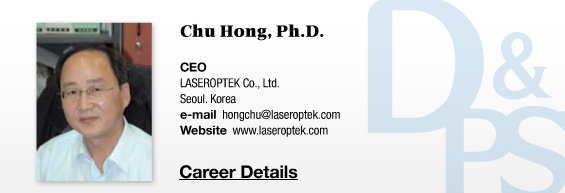Key examples of such two-in-one devices are Nd:YAG and alexandrite lasers. Three important aspects of a long pulsed laser are efficacy, pain management and treatment duration. Such needs led to development of equipping one device with two lasers. Long pulsed laser and Er:YAG laser were also combined. Such attempts reflected the doctors’ needs to expand the range of possible treatments with a single device. As I have already explained in the previous article, the history of laser hair removal began with the FDA approval of laser devices for permanent hair reduction in 1997. As shown in the phrase “permanent hair reduction,” laser hair removal does not permanently remove all hairs but can only permanently reduce the number of all body hairs. The concept of laser hair removal was established by Rox Anderson who devoted his research to developing scar-free laser treatments. His methods are widely used today and include removal of birthmark, pigmented lesions, tattoos as well as permanent hair removal. He has obtained approximately 60 domestic and international patents and published about 250 scientific books and papers. His famous colleagues include Thomas B. Fitzpatrick whom we discussed in the previous article and Madhu A. Pathak who discovered para-aminobenzoic acid (PABA; UV blocking agent)².
HELIOSⅡ/LOTUSⅡ/HYPERION – Manufacturer: LASEROPTEK(www.laseroptek.com)
In the field of vascular treatment, dye laser (PDL) pioneered by Rox Anderson and Cu-vapor laser (CuBr Laser) are used in superficial vascular lesions (port wine stains, haemangioma). For deeper lesions (deep haemangioma, varicose veins, etc.), long pulsed Nd:YAG laser (1064nm, 1320nm) and laser diode (800~900nm) are used. In the 2000s, Q-switched laser devices were widely introduced for removal of pigmented lesions and tattoos. At the time, this type of laser recorded the highest sales. Although not much progress was made regarding the problematic melasma or tattoo removal, specialists started to actively exchange information regarding treatment techniques. In 2006, HOYA Conbio obtained FDA approval of a double-pulsed laser that improved upon pulse train (multi-pulse) laser that was once popular in the 90s in Europe for treatment of pigmented lesions. However, this device failed to gain much traction. In the 2000s, no Q-switched lasers with new concepts were developed and laser output parameters (consistency of energy/beam and output stability, etc.) were improved thanks to extensive clinical research. Q-switched picoseconds lasers started being developed in the mid 2000s.
References 2. Manstein D, Herron GS, Sink RK. Anderson RR, Fractional photothermolysis: A new concept for cutaneous remodeling using microscopic patterns of thermal injury. Lasers Surg Med 2004;34:426-38.
-To be continued





















